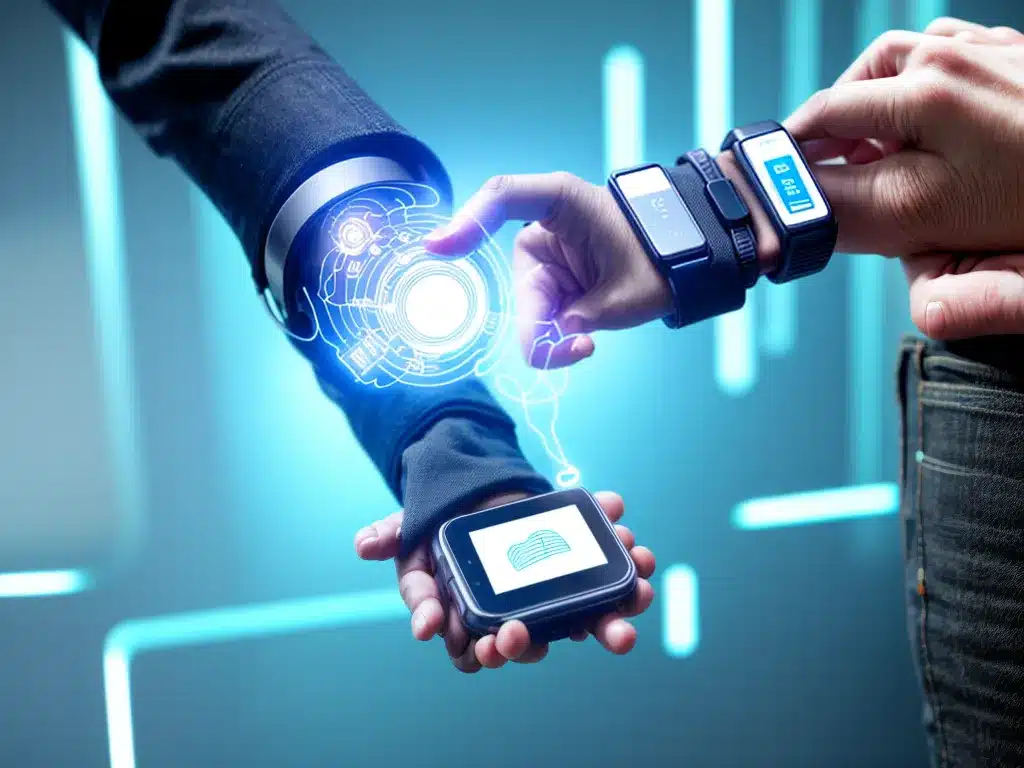
Wearables Get Smarter with Advances in IoT Integration
The world of wearable technology is rapidly evolving. With the growth of the Internet of Things (IoT), wearables are becoming increasingly integrated and “smart.” As a creator of wearable devices, I am excited to see how IoT integration is transforming my own products. In this article, I will explore the key ways IoT is making wearables smarter and more useful.
Enhanced Connectivity and Communication
One of the biggest impacts of IoT on wearables is enhanced connectivity and communication abilities. With IoT integration, wearables can now:
- Seamlessly connect to the internet and other devices using protocols like Bluetooth, WiFi, and cellular. This allows for real-time data transmission.
- Interface with smartphones and home hubs to receive notifications, track fitness data, control smart home devices, and more.
- Communicate with other wearables to share data and coordinate functions. For example, a smartwatch can share heart rate data with fitness headphones to optimize audio.
“IoT integration allows my smartwatch to instantly display phone notifications, track my daily step count, and remotely control my smart lights – all capabilities that simply weren’t possible before.”
By enabling sophisticated connectivity, IoT transforms wearables from standalone devices into an ecosystem of interconnected products.
Contextual Awareness and Intelligence
Another benefit of IoT integration is giving wearables contextual awareness and intelligence. With constant connectivity, wearables can now:
- Leverage built-in sensors like accelerometers, altimeters, and gyroscopes to understand environmental context. This allows wearables to do things like track elevation and intensity during workouts.
- Apply machine learning and artificial intelligence to better understand user behaviors, preferences, and needs over time. This enables more personalized and predictive experiences.
- Access cloud-based services to provide enhanced capabilities like natural language processing and voice control. For example, earbuds can now offer real-time language translation powered by the cloud.
“By connecting biometric sensors with machine learning algorithms, my smartwatch can now detect if I’m getting sick before symptoms appear and prompt me to take preventative action.”
In essence, IoT gives wearables “smarts” that transcend their physical form factor.
New Modes of Interaction
IoT also facilitates new modes of interaction between wearables and users. Examples include:
- Touch interfaces – Many smartwatches now feature full touchscreen displays with intuitive UIs for apps and information. IoT enables smooth interaction by powering real-time graphical interfaces.
- Voice control – With cloud connectivity, wearables can now offer speech recognition and natural language processing for voice commands. I can ask my smart glasses about the weather and get an instant audio response.
- Gesture control – Wearables are integrating gesture control powered by sensor data analysis. For instance, I can answer calls on my smartwatch just by waving my hand.
- Haptics – Devices like smart rings now feature haptic feedback through vibrations to discretely notify users of notifications and other outputs.
Expanded Applications
Finally, IoT allows wearables to expand beyond single-purpose devices into multi-functional platforms. Some examples include:
- Smart clothing – Apparel like shoes, shirts, and hats can now collect and analyze sensor data to track fitness, health stats, and more.
- Enterprise wearables – Industries like manufacturing and warehousing are equipping workers with AR glasses, robotics gloves, and other IoT wearables to enhance safety, productivity, and training.
- Medical wearables – Devices like smart glucose monitors and posture-correcting shirts demonstrate the potential for transforming healthcare with highly-targeted, connected wearables.
The app possibilities are endless thanks to compute power moving from phones directly to our bodies.
The Future Looks “Smart”
In summary, IoT integration is revolutionizing wearables by enhancing connectivity, intelligence, interactions, and applications. As a creator in this space, I am thrilled by the new product experiences this enables. Though still early, the future looks very “smart” for wearable tech as it harnesses the power of the Internet of Things.












